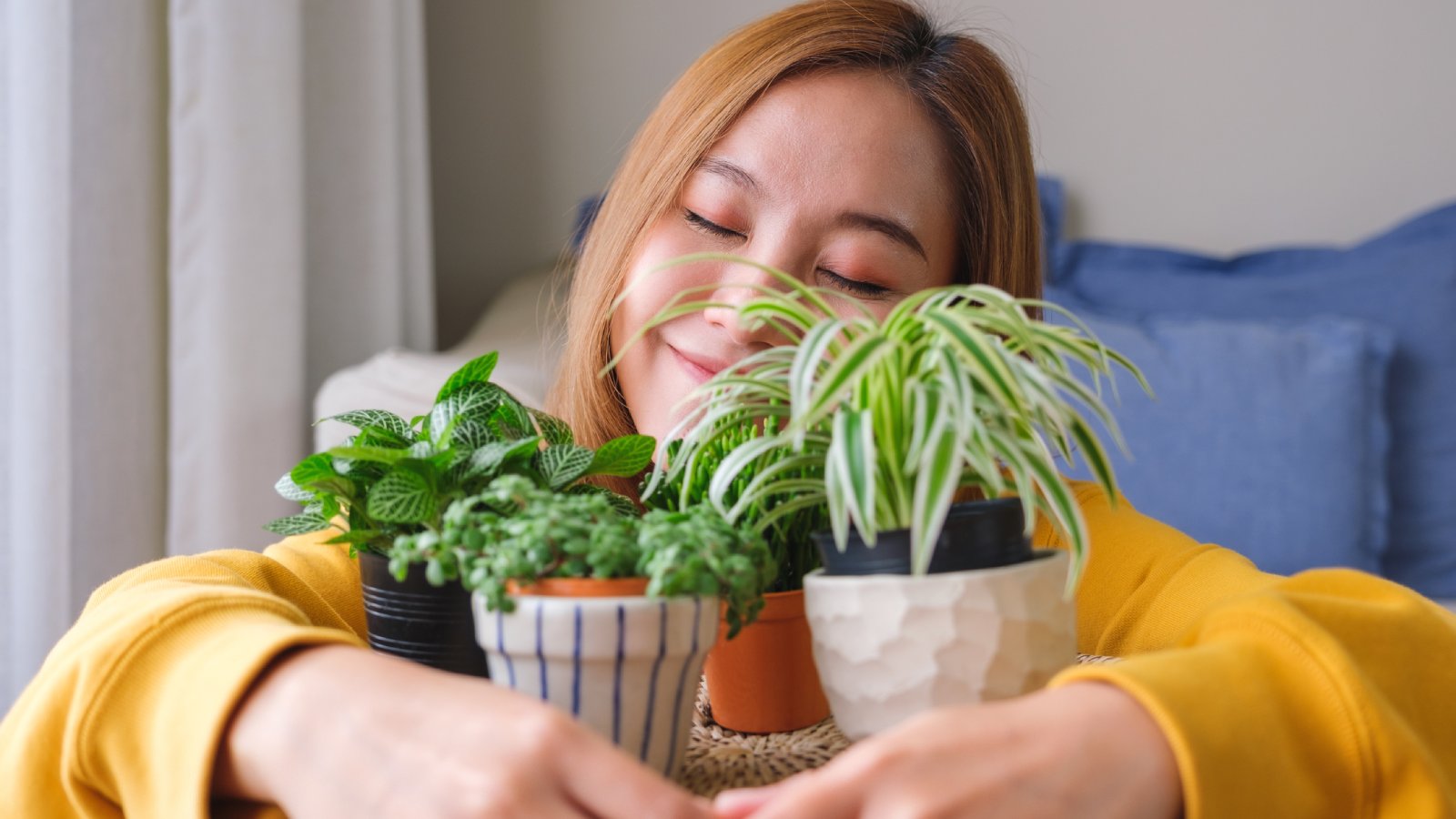Care Of Houseplants: The Basics Of Growing Houseplants
Looking to become a plant parent? Need some pointers? We're covering all the basics: light, water, fertilizer, and temperature.


Growing houseplants is an excellent way to not only beautify your home, but to purify the air as well. Many houseplants are tropical plants and the care for tropical houseplants can vary, but there are a few rules of thumb to follow for indoor houseplant care. Keep reading to learn more about the basic care of houseplants.
Care of Houseplants
Here are the basics of houseplant care to get you started.
Light
Light is an important part of indoor houseplant care. In order to provide the right amount of light for your houseplant, make sure to check the tag on the plant when you purchase it. If the houseplant is given to you, ask the person giving it to you what kind of light it needs.

Generally houseplants need either high, medium, or low light. Beyond this, a houseplant may need direct (bright) light or indirect light.
- Bright or direct light- Direct light plants need light that comes from a window. The brightest light will come from a south-facing window.
- Indirect light- Indirect light houseplants need light that comes from a light bulb or is sunlight that has been filtered through something, like a curtain.
- High light houseplants- If the indoor houseplant care instructions for a houseplant call for high light, this plant will need five or more hours of bright light, preferably near a south-facing window. High light houseplants need to be within 6 feet (2 m.) of a window.
- Medium light houseplants- For proper houseplant maintenance of medium light houseplants, they should be exposed to several hours of bright or indirect light. This light can come from a window or from overhead lighting.
- Low light houseplants - Low light houseplants need very little light. Typically, these houseplants do well in rooms that have light but no windows. That being said, low light plants need light of some kind. If a room has no windows and the lights stay off most of the time, the houseplant will not survive.
Water
When growing houseplants, water is essential. The general rule of thumb is that you should only water a houseplant if the top of the soil feels dry. Watering this way is correct for most indoor houseplant care.
A few houseplants, particularly succulents and cacti, only need to be watered when the soil is completely dry and a few others may need to be kept constantly moist. The houseplants that have special watering needs will be marked as such on their tag when you buy them. If there are no special instructions for watering on the tag, then you can go by the "dry to the touch" rule for watering care of houseplants.
Fertilizer
For houseplant maintenance, they can be fertilized one of two ways. The first is through water, the other is through slow release fertilizer. Which you use for growing houseplants is up to you. Both work well.
Sign up for the Gardening Know How newsletter today and receive a free copy of our e-book "How to Grow Delicious Tomatoes".
When you fertilize a houseplant through water, you will add a water soluble fertilizer to the plant's water about once a month in warm weather and once every two months in cooler weather.
If you want to use a slow release fertilizer, add it to the soil once every two to three months.
Temperature
Since most houseplants are actually tropical plants, they cannot tolerate cold temperatures. The care for tropical houseplants requires that the houseplants be kept in rooms that are between 65 and 75 degrees F. (18-21 C). These are the temperatures that most houseplants prefer. If needed though, many houseplants can tolerate temperatures as low as 55 degrees F. (13 C), but they won't thrive at temperatures this low for too long.

Heather Rhoades founded Gardening Know How in 2007. She holds degrees from Cleveland State University and Northern Kentucky University. She is an avid gardener with a passion for community, and is a recipient of the Master Gardeners of Ohio Lifetime Achievement Award.